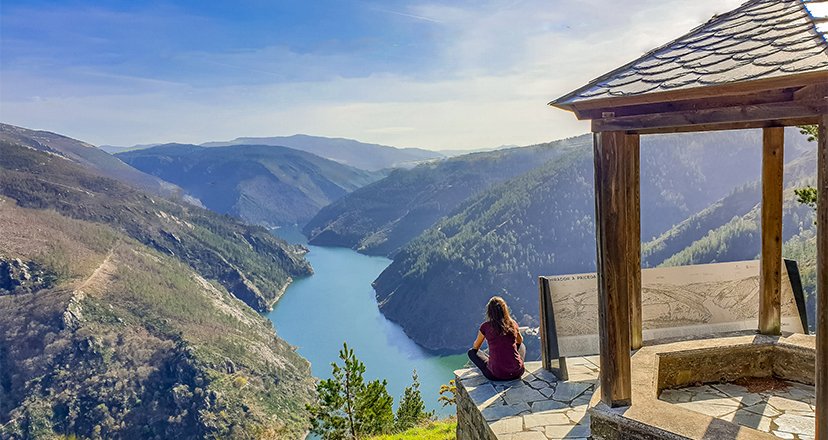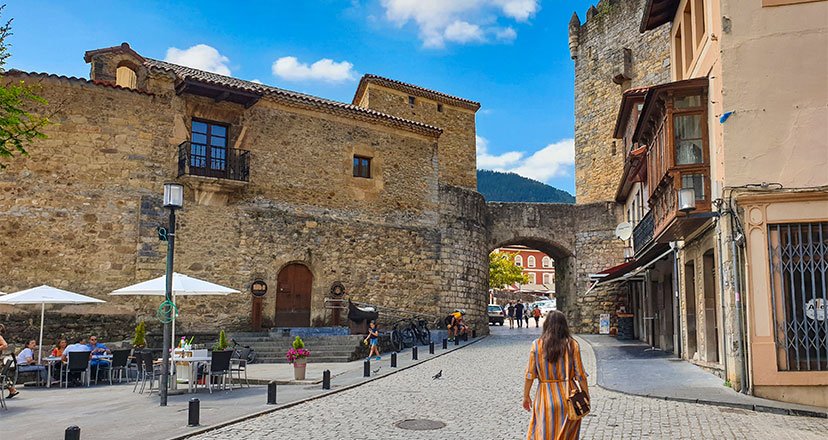Back 10 lesser-known places to visit in Asturias
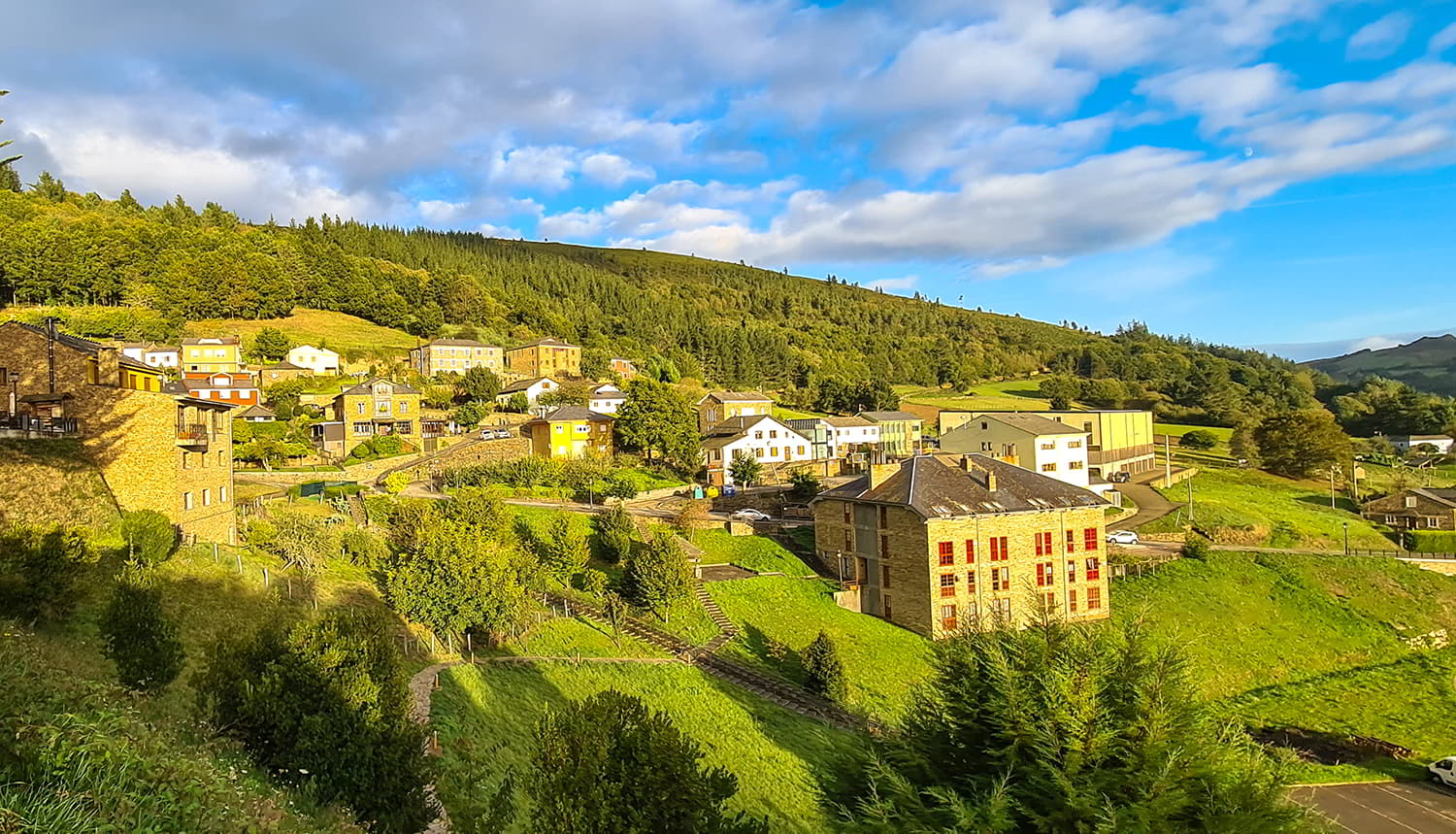
10 lesser-known places to visit in Asturias
Asturias is full of charming villages, several of which are regulars on any list of the most beautiful in Spain.
The region has a long list of unknown villages, interesting rural gems set in intensely green natural landscapes, perfect places to get lost, and also to find yourself.
This is a journey through 10 places and their surroundings, off the beaten tourist track, where you can discover the real Asturias.
San Esteban de Cuñaba (Peñamellera Baja)
Perched between mountains, in an area of extraordinary beauty, this idyllic village of beautiful houses, is one of the less travelled accesses to the Picos de Europa National Park.
San Esteban de Cuñaba is in Peñamellera Baja, in the easternmost part of Asturias, and is a secluded, quiet and peaceful place, where time stands still and life is relaxed and harmonious. The road that takes you there already gives clues as to why it is one of the most remote villages in the Principality.

A village that was destroyed by floods in 1983, rebuilt with the efforts of the villagers and rewarded shortly afterwards, being the first to be distinguished as an Exemplary Village, in 1990.
From the village itself we can follow the PR-PNPE-29 signs that lead to Tresviso and approach a viewpoint that offers a magnificent view of San Esteban. A little further on, following the same route, the path takes us to a recreational area (just over 1 km from the village) surrounded by a magical setting, although in a shady area, so it is best used in summer.
In addition to the variety of routes in the surrounding area, half an hour's drive from San Esteban de Cuñaba you can visit the Cueva de la Loja, the first cave with Palaeolithic art discovered in Asturias.
Colombres and Bustio (Ribadedeva)
At the easternmost tip of Asturias, surrounded by green landscapes, we find two beautiful villages that stand out for their cultural and historical heritage: Colombres and Bustio.
Their history speaks of indianos, who are those who emigrated to America, returned enriched and built unique buildings to generously transform their population of origin, leaving an important legacy in both villages.

Colombres received the award of Exemplary Town in 2015 and was listed as an Asset of Cultural Interest in 2013. The Huella Indiana signposted route allows you to discover more than 10 of these palace-houses on a pleasant stroll.
Quinta Guadalupe stands out, one of the most notable Indiano houses in Asturias, which currently houses the Fundación Archivo de Indianos-Museo de la Emigración (Indiano Archive Foundation-Emigration Museum). Built in 1906, this impressive Indiano house is named in honour of Guadalupe Castro, wife of Iñigo Noriega. Iñigo emigrated to America at a very young age, where he was able to make a huge fortune in Mexico. A legendary character who even had a private army to look after his possessions and who lost his fortune with the arrival of the revolution.
Just two kilometres from Colombres is Bustio, a pretty, peaceful fishing village on the banks of the Tinamayor estuary, where you can enjoy its Indian architecture, its charming fishing port and the surrounding countryside.
A few kilometres away is the cave of El Pindal, a treasure that can be visited, with cave paintings from the Palaeolithic period. La Franca beach, with its thousand nooks and crannies at low tide, is also very close by. The Northern Pilgrims' Route to Santiago de Compostela passes through here, and both Bustio and Colombres are regular stops for many pilgrims to spend the night.
San Esteban (Muros de Nalón)
The town of San Esteban, although today it is a quiet and peaceful port, was the first and only coal port in Spain. It experienced its peak of activity at the beginning of the 20th century, when the Fuso de la Reina - San Esteban de Pravia railway line was built, on which coal ore was transported to the port for transfer to the iron and steel industries of the Basque Country. The cranes and the loading bays used for unloading the ore have been perfectly restored and remain from this period. It is not in vain that it has been declared of Historic-Industrial Interest.
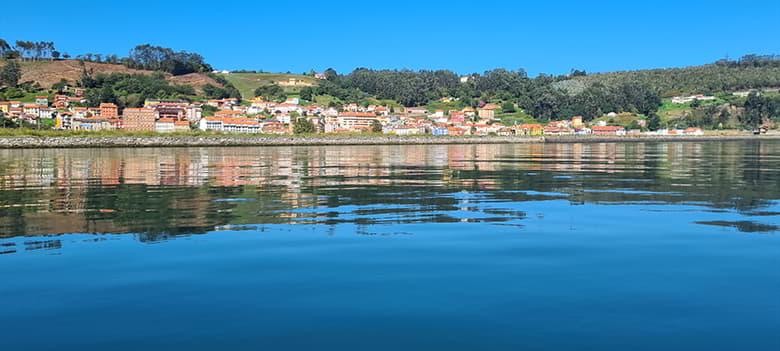
This industrial past and its legacy in the form of industrial heritage coexist in this pretty seaside town with several indiano houses, excellent gastronomy, as well as an iconic saltwater swimming pool overlooking the neighbouring beach of Los Quebrantos.
San Esteban is also the starting point of one of the most famous coastal routes in Asturias: the Miradores route. An easy route, about 6 km (one way), starting at the beach of San Esteban, and extending to the surfing beach of Aguilar, with several viewpoints to the Asturian coast and beaches in between, which make it a must if you decide to visit San Esteban.
Malleza (Salas)
Delve into the nature and serenity of Malleza, in Salas, exploring its peaceful landscapes and discovering the authenticity of this picturesque town, known to some as Little Havana.
Although Malleza has a respectable number of local buildings such as hórreos and paneras, it is known for the number of Indian constructions, with beautiful and stately buildings, closely linked to the emigration to Cuba.
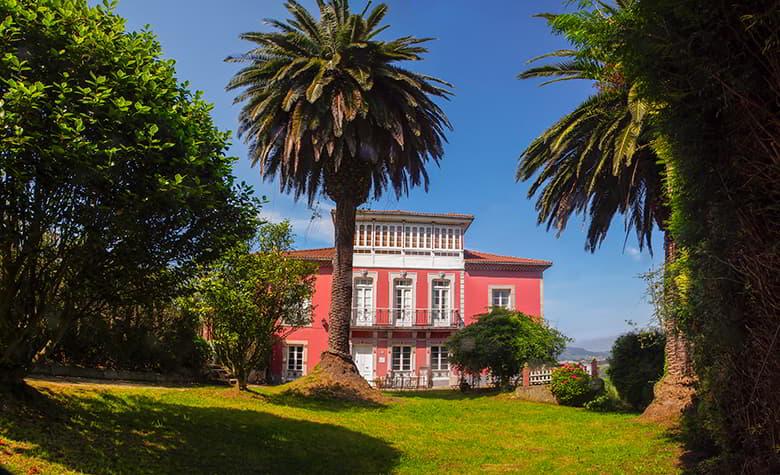
There are also the classic palm trees in the larger houses with manicured gardens. These palm trees are a symbol of the houses of the Indianos, the hallmark of the successful returning emigrant who surrounds himself with exotic gardens, reminiscent of overseas.
A good way to get to know Malleza and the surrounding area is to take the beautiful walk to La Granja. Just 5.5 kilometres round trip, in a setting with woods, fountains, Indiano houses and even a palace, that of the Count of Toreno. An ideal route to enjoy the architecture and the legacy of those Indianos who returned to their homeland and proudly enhanced their place of origin.
A visit to this part of Asturias would not be complete without a visit to the beautiful neighbouring town of Salas, capital of the council of the same name and declared an Asset of Cultural Interest, just 14 km away by car.
Vixidel and the braña of La Revechada (Teverga)
Explore the connection with nature in Vixidel and the braña of La Revechada, in Teverga, where the beauty of the surroundings will transport you to a place full of peace and serenity.
Resting on a sea of green, we find Vixidel, a small, traditional village where we can enjoy several granaries, a peculiar chapel and, above all, the peaceful and pure life of the rural environment.

One of the best things to do in Vixidel is to visit the beautiful braña de la Revechada, in a good state of conservation and with fabulous panoramic views. You can get there by taking an easy route of about 8 km (there and back) and 500 m of difference in altitude. This hike is a delightful forest bath, which in autumn is at its best. Nature in capital letters in the centre of Asturias.
Sobrefoz and Ventaniella (Ponga)
Discover the beauty of Sobrefoz and Ventaniella in Ponga, immersing yourself in a breathtaking natural environment and exploring its charming local traditions.
The council of Ponga, and the Natural Park that occupies its extension, is famous for its superlative landscapes, with such compelling representatives as the Beyos gorge, the Peloño forest or the Tiatordos, the perfect mountain.
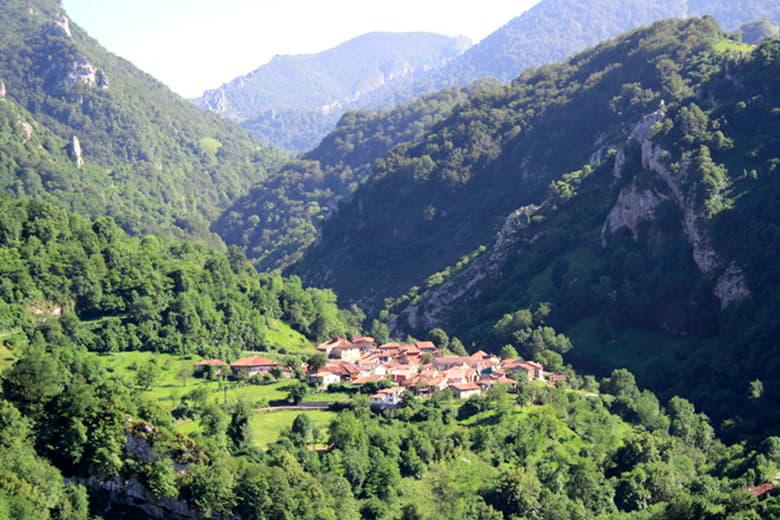
Despite this, Ponga is an almost unchanged place with charming villages such as Sobrefoz, in the heart of the Natural Park, where you can enjoy its hórreos (raised granaries) and its renowned gastronomy. From Sobrefoz it is possible to do several routes in a fabulous natural setting, such as the Ponga valley route, climbing the Recuencu peak, or walking to our next stop, Ventaniella.
To the south of the parish of Sobrefoz we find Ventaniella, a hidden and special place, where you will discover a meadow so beautiful that it looks like something out of a film, with a hermitage of medieval origin and a farmhouse.
Ventaniella is a beautiful place, in complete tranquillity, which is at its most beautiful in autumn.
Boal
With just over 800 inhabitants, it is one of the six parishes in the council that share the same name. An inland village where you can breathe tranquillity and disconnection, but with a wide range of activities, and only 20 minutes from the coast. This makes it an excellent option for a stay of several days.
Boal has an important Indian heritage, which in itself justifies a visit. But it has much more to offer, with nature in the eye of the hurricane.
Explore Boal, not only for its charm, but also for the thrill of the adventure sports on offer, making this town a vibrant and energetic destination in western Asturias.
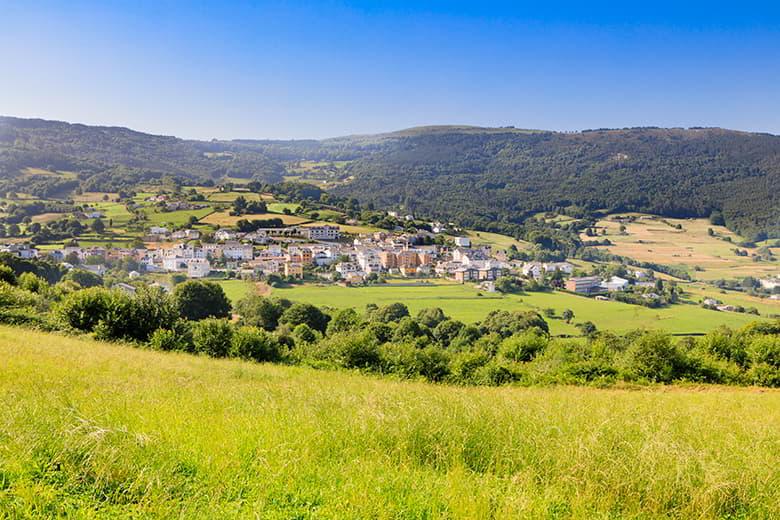
Boal is a perfect playground for active tourism experiences, where you can enjoy kayaking routes in stunning surroundings and also more spicy activities, such as canyoning.
There are a variety of hiking routes, such as the 11.3 km long Navia Viewpoints route (PR-AS299), which is very varied and offers a walk through scrubland, rural villages with history and views of the meandering meanders of the Navia.
The council is closely linked to honey production, so if you prefer a more relaxed experience, you can make an interesting and educational visit to the Museum of Beekeeping, just 2 kilometres from Boal.
Santalla (Santa Eulalia de Oscos)
Let yourself be captivated by Santalla (header photo), the capital of Santa Eulalia de Oscos, one of the three councils, together with Villanueva and San Martín, that make up the Los Oscos area. Explore its history, traditions and landscapes, which will take you back in time to a past full of authenticity in the westernmost part of Asturias, near Taramundi.
We suggest you start your visit in Santalla. This village will take you back in time, as there you will find such attractive curiosities as Irene's loom, a craftswoman who still weaves as she did in the 18th century, using purely natural materials such as wool, silk, cotton and linen. Another landmark craft is her knives, one of the most renowned examples being the famous Hyottoko knives. And of course, if there is one thing that catches the eye in Santalla, because it is part of its iron culture, it is the sculptures of the ironworkers - there are them all over the village -, and some of them are designed for you to interact and have your photos taken with them and on them.
Now, before leaving the village to go to the ethnographic site of Mazonovo, you have to visit the Birthplace Museum of the Marquis of Sargadelos, a prominent industrialist from Santalla, inventor of the prestigious Sargadelos ceramics.
You will have to travel just five kilometres to reach Mazonovo, where you will find the only blacksmith's forge that has been in operation since it was built in the 18th century.
Although it is an open secret in Asturias that the rural landscapes of the mid-mountains of the Oscos are a marvel, the area is still secluded, peaceful and preserves the authenticity of places that are not very touristy. For this reason, it encourages a journey of several days by road, enjoying the quiet rural life of the three councils of Oscos, which were awarded the Exemplary Village award in 2016.
Santalla is one of the most beautiful places to see in Los Oscos, integrated in the Biosphere Reserve of Oscos-Eo and Terras de Burón, the only Reserve with a coastline in Asturias. Here the routes with high scenic rewards are guaranteed, among the most beautiful are the one of A Seimeira, with a waterfall of more than 30 metres, or the one of Forcón de los Ríos, both of them ideal to do with the family.
Grandas de Salime
This neighbour of Los Oscos is the last Asturian stronghold on the border with Galicia. Grandas de Salime is the end of the Primitive Way of St. James in Asturias, before entering Lugo through the Acebo pass, which acts as a barrier to oceanic influences and gives the area a more continental, less humid and warmer climate.
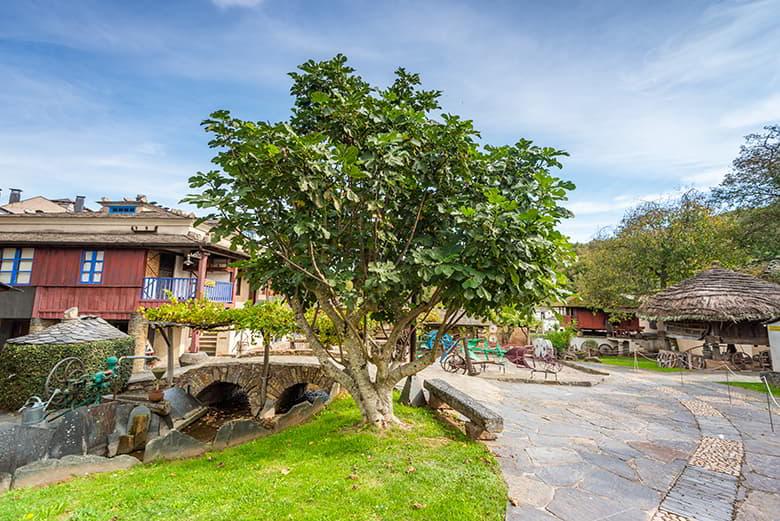
The rural centre of Grandas de Salime has the same name as the council and has an important heritage element:
■ The Ethnographic Museum of Grandas de Salime, where you can watch live craftsmen at work and learn about traditional life in the area. It is an ethnographic museum with one of the most important collections in northern Spain.
There is also a Tourist Office here, the ideal place to get information about the area and where you are sure to be recommended to visit emblematic places such as:
■ The best known is the Salime reservoir, inaugurated in 1955, and built on the river Navia. Its 132-metre-high dam is a great example of industrial heritage and offers wonderful panoramic views of the largest reservoir in Asturias.
The Chao Samartín castro and museum, an interesting site of a fortified settlement dating back to the Bronze Age.
The neighbourhood community of Grandas de Salime has been an Exemplary Village in 1993.
Pesoz
Pesoz is a peaceful rural village in the westernmost part of Asturias, with slate roofs in harmony with the green and rugged surroundings. Time has undoubtedly stood still here.
It is the capital of the council of the same name, one of the smallest in Asturias, and part of the Navia Historical Park.
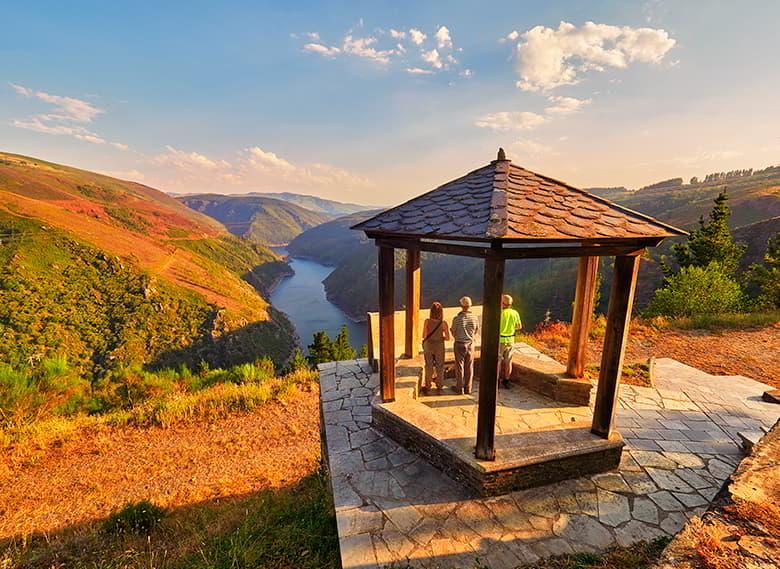
Pesoz also has an ethnological museum, where you can discover all the curiosities of the wine culture in western Asturias, which has been deeply rooted since the Middle Ages and currently has a PDO, which includes several councils in western Asturias.
From Pesoz, there are two easy routes, ideal for discovering the heritage of this Asturian council. Walking is not compulsory, you can also go by car.
The Agüeira River route, PR AS-117, takes us 5 kilometres to the medieval village of Argul, whose historical site was declared an Asset of Cultural Interest in 2004. Argul sits on a rocky outcrop that conditioned and distinguished its buildings, where the tunnels and corridors that connect the rooms of the house are very characteristic.
Also from Pesoz, we can follow the PR AS-169 route that takes us to the nearby abandoned village of A Paiceiga. Built in the middle of the century to house the workers who built the Salime reservoir, who came from all over Spain. Today in ruins, the village is a particular place that moves you when you walk through it and has become one of the most sought-after spots in Asturias, due to the iconic panoramic view from its beautiful viewpoint overlooking the reservoir.
This list of 10 villages does not include all of them, but all of them are well worth a visit, either for a day trip or to escape for a few days and let yourself get caught up in the tranquillity of Asturian rural life.
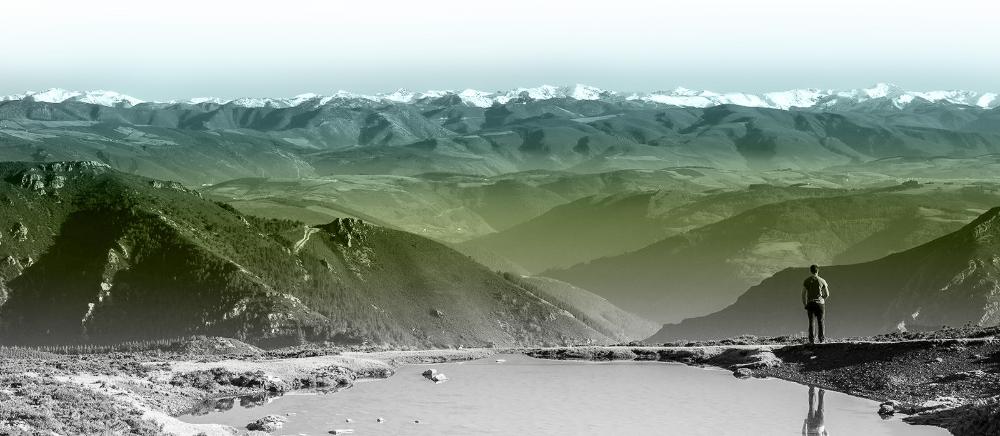
Subscribe to our newsletter and take advantage of offers, discounts, and news
Subscribe

